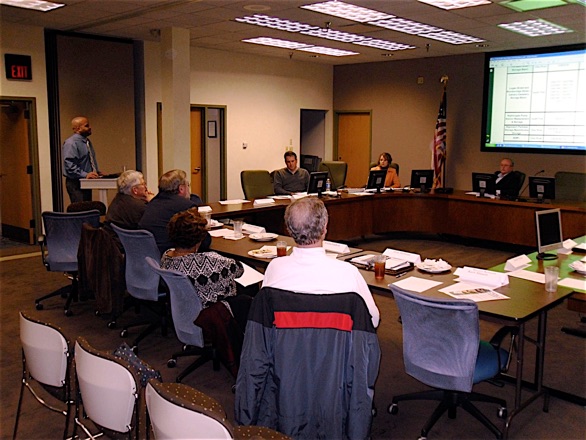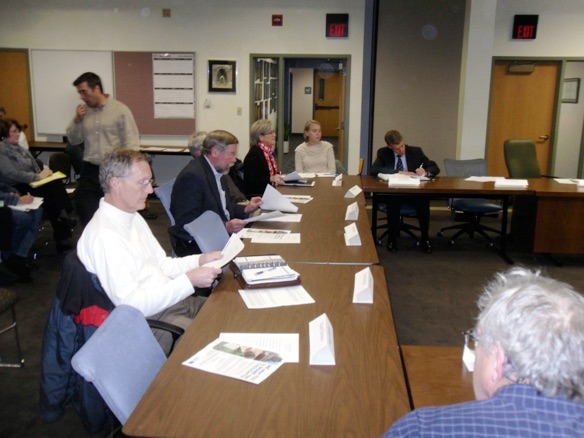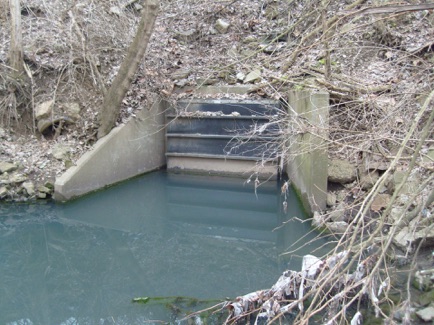The article features a quote from the 1937 Louisville Public Health Dept.:
The only correct and permanent solution for these conditions is the construction of sanitary sewers . . . It is questionable if this improvement will be brought about for many years to come because of the extensive expenditures necessary . . . and particularly so because of the large amounts of money required to construct the combined system of sewers.
In 1989 the EPA began to survey the national sewer overflow situation. A 1993 report estimated that national sewer overflows discharged about 1.2 trillion gallons of raw sewage and untreated industrial wastes to stream and rivers each year from more than 9,471 overflow points.
Beginning in 1992, EPA assembled “key stakeholders” in a negotiated dialogue process to arrive at a consensus CSO control policy. In 1994, EPA issued a Nine Minimum CSO Controls Policy setting out initial base line projects for overflowing sewer systems. This was made law in the Consolidated Appropriations Act for Fiscal Year 2001, P.L. 106-554.
A major sewer overflow outfall on the Ohio River from the Louisville Combined Sewer system or CSS.

MSD Wet Weather Team Stakeholder Meeting held 11-29-2011
MSD was sued by the USEPA in 2005, and entered into a Consent Agreement, later signed into a legal order by the federal judge in 2009. The Consent Decree set a schedule for designing and building a series of sewer projects in Jefferson County, Kentucky. The projects are aimed at reducing the frequency and volume of sanitary sewer overflows in the old urban core as well as SSOs on lines to newer development in the suburbs.
Public consultation is a requirement of the Clean Water Act and is specifically required in the decision making by local sewering agencies as they decide on projects and priorities that make up the Longterm Control Plan mandated by federal law for reducing sewer overflows.
In the past only the most fetid and rank stench of blackened waters and the death of children by typhoid tore the attention of business leaders from the god of Mammon to the need to act cooperatively to protect public health.
In Louisville in the early 1900s, the Commissioners of Sewerage built massive sewers like the great southwest outfall, a basket handle sewer pipe, its construction depicted in a pen and ink drawing that proudly hangs in MSD’s Boardroom. An interesting online article in the UofL Sustain magazine, 2009 Fall issue written by former MSD engineer, Sarah Lynn Cunningham, chronicles development the early Louisville sewer system:
<http://louisville.edu/kiesd/sustain-magazine/Sustain19.pdf>

The history lesson shows that political leaders would rather raise tax dollars to do most anything other than cause them to disappear into sewer pipes. Louisville like other Kentucky cities, established separate public corporate sewer agencies under state statute, that were empowered to issue bonds and set rates to amass funds for sewering projects. Dividing the public health responsibility of building sewers from the main functions of running the Metro government preserved to city fathers the autonomy to squander their public dollars for their preferred boondogles. Thus we spend hundreds of millions for downtown basketball arenas and business property but in 2011, a century after typhoid stalked the dirt tracks of old Louisville, we still have 115 operating wet weather sewer overflows.
Louisville’s foot-dragging and lack of progress caused the EPA to sue MSD in 2005, and by 2009 a Consent Decree of selected projects had been ordered. Page 7 of the Consent Decree reads in part:
“As part of that process of proposing amendments to this Amended Consent Decree to incorporate the results of characterizations, assessments, modeling, engineering design studies, and to implement compliance measures and construction projects, the public will have an opportunity, in accordance with the provisions of 28 C.F. R § 50.7, for notice and comment to present facts or considerations on whether the proposals are appropriate, proper and adequate to achieve full compliance with the Act.”
DOWNLOAD the Federal EPA Complaint against MSD
Click on the link below
http://www.badwaterjournal.com/FederalEPAMSDcomplaint.pdf
The political dynamics have not changed much over the century. Politicians still would rather not be diverted from approving new business development in any corner of the county, regardless of the impact to streams and rivers caused by gung-ho development attaching new sewer flows to inadequate pipes that are already overflowing. Thus we see in the composition of the stakeholder committee that sat in privileged position at the meeting on 11-29-2011, an attempt by MSD and the city, to control and manage the public consultation process toward their favored outcomes.
The consultation process featured Wet Weather Committee “stakeholders” who sit in a group and engage in negotiated dialogue with MSD engineers as they trot out their proposals and justifications. Since the meeting is open to the public, the rest of those attending are classed as “participants.” Participants do not have stakeholder rights to engage in dialogue with MSD during the meeting. Participants do not get advance copies of MSD proposed projects or the chance to comment on MSD responses to public comments before they are released. Stakeholders have these privileges, and ultimately will sign off on agreed changes to the Consent decree projects assuring EPA that they, as representatives of the public, believe the projects will meet the requirements of the Clean Water Act.
Teena Halbig and Peter Bodnar of Floyds Fork Environmental were not happy with the two-tired system that was top heavy with government, industry and institution heads and lacked anyone with clear credentials as a stream protector. Lisa Santos of the Irish Hill neighborhood did not show up, and Arnita Gadson of the state entity, Environmental Quality Commission doesn’t meet the criteria of grassroots enviro. The others wear too many hats and are veterans of too many similar public processes to be thought independent public voices.
With so many government and grant funded institutions sitting in the stakeholder positions the predictable process is that the government and favored business interests will spend the time telling themselves what they want to hear and implementing decisions agreed upon somewhere else. This is the way history repeats itself.
MSD should open the stakeholder membership to a representative from Floyds Fork Environmental Assn. long time volunteer activists for stream quality. Also a member of other neighborhood associations would be good, Clifton, Cherokee Triangle or Butchertown have able players.
I thanked MSD for listening to the public and otherwise carrying on a robust public consultation, especially with the announcement that the I-64 Grinstead Overflow Basin would be taken off the fast track and a re-evaluation of possible green infrastructure projects that could reduce the size of a concrete storage basin would be made.
The history of poor planning and public health risks caused by human sewer pollution have resulted in a government planning process that forces engineers to show the public what they are doing. Congress deemed that a necessary check and balance to keep business from robbing the sewer funds and bribing the engineers.
MSD is now on track and implementing many new projects to reduce sewer overflows. I am glad to report that we may be seeing the progress many had sought in the 1980s. We all will benefit from helping MSD stay on track with constructive, vigilant participation.
Tour the MSD website for details of the January 24th meeting at Girl Scout headquarters
http://www.msdlouky.org/projectwin/
There is a new CSO locator map also
http://www.msdlouky.org/projectwin/county_cso_sso.htm
Bud Hixson 11-30-2011




Tom Herman of Zeon Chemicals in the white shirt, past him David Tollerud, UofL School of Public Health , then Bob Marrett, CMB Development Company LLC, and Tina Ward-Pugh, District 9 Metro Council, in a red scarf and finally Jim Mims, Metro IPL, in a suit. David Wicks, JCPS, in the foreground in a blue shirt. Teena Halbig for Floyds Fork Environmental, not a ‘stakeholder’ with full rights sits on the far left.
MSD engineer, Justin Gray at the podium, describes the process of sewer system overflow computer modeling and calibration based on actual monitored overflow volumes. 150 additional flow monitors will be installed.
Interim MSD Chief Engineer, Steve Emly, next to him in red is MSD, Brian Bingham, Director of Regulatory Services, and then MSD, Angela Ackridge, WIN Project Manager.
Surprisingly, the meeting facilitator is engineer Gary Swanson a VP of CH2Mhill, the company that former MSD Executive Director Gordon Garner works for and an engineering contracting corporation holding multi million dollar MSD contracts.

Business
Government
Government
Grant funded
Business
Government
Government
Industry
Government
Builder
Government
Government
Neighbor
Grant funded
Grant funded
Government
Government
